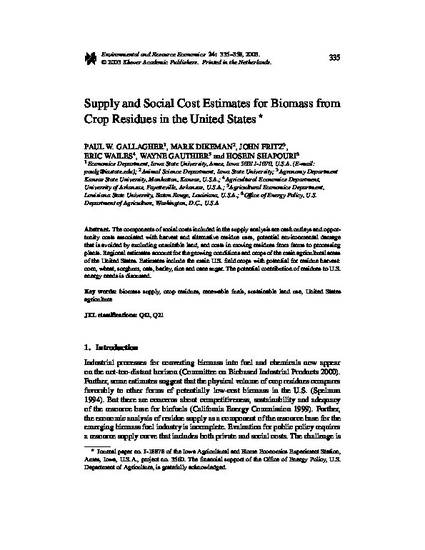
Article
Supply and Social Cost Estimates for Biomass from Crop Residues in the United States
Environmental and Resource Economics
Document Type
Article
Disciplines
Publication Version
Published Version
Publication Date
4-1-2003
DOI
10.1023/A:1023630823210
Abstract
The components of social costs included in the supply analysis are cash outlays and opportunity costs associated with harvest and alternative residue uses, potential environmental damage that is avoided by excluding unsuitable land, and costs in moving residues from farms to processing plants. Regional estimates account for the growing conditions and crops of the main agricultural areas of the United States. Estimates include the main U.S. field crops with potential for residue harvest: corn, wheat, sorghum, oats, barley, rice and cane sugar. The potential contribution of residues to U.S. energy needs is discussed.
Rights
Works produced by employees of the U.S. Government as part of their official duties are not copyrighted within the U.S. The content of this document is not copyrighted.
Language
en
File Format
application/pdf
Citation Information
Paul W. Gallagher, Mark Dikeman, John Fritz, Eric Wailes, et al.. "Supply and Social Cost Estimates for Biomass from Crop Residues in the United States" Environmental and Resource Economics Vol. 24 Iss. 4 (2003) p. 335 - 358 Available at: http://works.bepress.com/paul-gallagher/27/

This article is from Environmental and Resource Economics 24 (2003): 335, doi: 10.1023/A:1023630823210.